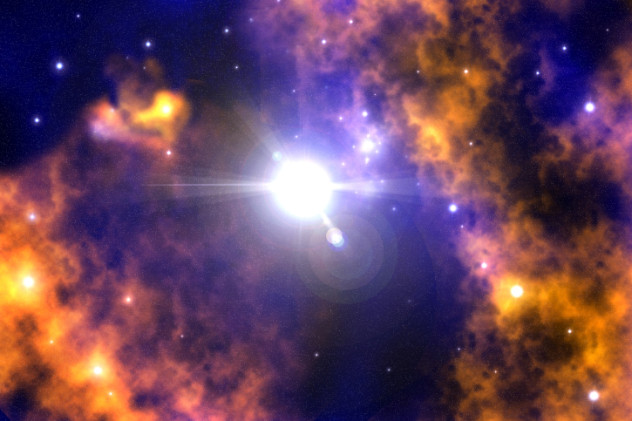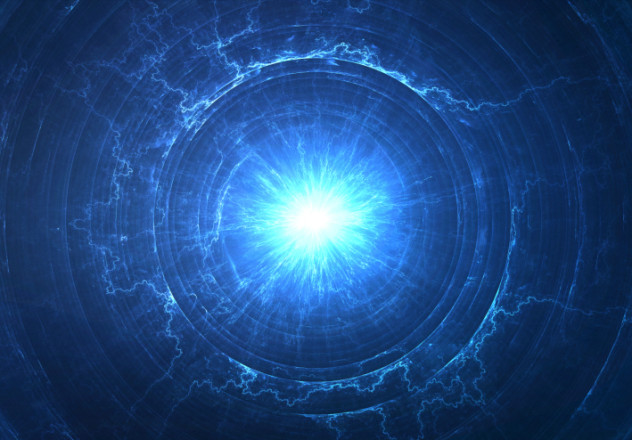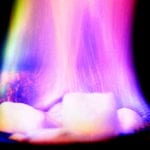 History
History  History
History  Weird Stuff
Weird Stuff 10 Superstitious Beliefs That Once Consumed Entire Cultures
 History
History 10 Bizarre Friendly Fire Incidents in Military History
 Technology
Technology 10 Modern Technologies That Accidentally Imitate Ancient Magic
 Mysteries
Mysteries 10 Mysteries of the Human Genome
 Weird Stuff
Weird Stuff 10 Things So Rare They’ve Only Been Found Once
 History
History 10 Legends Whose Last Moments Undid Their Glory
 Health
Health 10 Futuristic Ideas to Treat Common Medical Problems
 Weird Stuff
Weird Stuff Ten Surreal Attempts to Reverse Baldness
 Facts
Facts 10 U.S. Government Contingency Plans for the Unthinkable
 History
History 10 Odd Things Colonial Americans Kept at Home
 Weird Stuff
Weird Stuff 10 Superstitious Beliefs That Once Consumed Entire Cultures
 History
History 10 Bizarre Friendly Fire Incidents in Military History
Who's Behind Listverse?

Jamie Frater
Head Editor
Jamie founded Listverse due to an insatiable desire to share fascinating, obscure, and bizarre facts. He has been a guest speaker on numerous national radio and television stations and is a five time published author.
More About Us Technology
Technology 10 Modern Technologies That Accidentally Imitate Ancient Magic
 Mysteries
Mysteries 10 Mysteries of the Human Genome
 Weird Stuff
Weird Stuff 10 Things So Rare They’ve Only Been Found Once
 History
History 10 Legends Whose Last Moments Undid Their Glory
 Health
Health 10 Futuristic Ideas to Treat Common Medical Problems
 Weird Stuff
Weird Stuff Ten Surreal Attempts to Reverse Baldness
 Facts
Facts 10 U.S. Government Contingency Plans for the Unthinkable
10 Unusual States Of Matter
Most people can easily name the three classic matter states of liquid, solid, and gas. Those who took a few more science courses will add plasma to that list. But over the years, scientists have expanded our list of possible states of matter far beyond the big four. In the process, we’ve learned a lot about the Big Bang, lightsabers, and a secret state of matter hiding in the humble chicken.
10Amorphous Solids

Amorphous solids are an intriguing subgroup of the well-known solid state. In a normal solid object, the molecules are highly organized and cannot move around very freely. This gives solid matter high viscosity, which is a measure of resistance to flow. Liquids, on the other hand, have a disorganized molecular structure, allowing them to flow past each other, splash around, and take the shape of the container they are held in. An amorphous solid exists halfway between these two states of matter. In a process known as vitrification, a liquid cools and its viscosity increases to the point that it no longer flows like a liquid, but its molecules remain disordered and do not form a crystallized structure like a normal solid.
The most common example of an amorphous solid is glass. For thousands of years, people have made glass using silica. When glassmakers cool the silica from its liquid state, it actually doesn’t solidify when it passes below melting point. As the temperature continues to decrease, the viscosity increases, making it seem solid. However, the molecules still maintain their disorganized structure. At this point, glass becomes an amorphous solid. This transitional process has allowed artisans to create beautiful and surreal glass sculptures.
So what’s the functional difference between an amorphous solid and a normal solid? In everyday life, not much. Glass seems completely solid until you look at it on a molecular level. And don’t be taken in by the myth that glass flows like liquid over long periods. Lazy tour guides like to perpetuate this myth by showing off old glass in churches, which often looks thicker toward the bottom, but that’s actually because of imperfections in the glassmaking process resulting in uneven glass, which was naturally placed in the window with the thicker side on the bottom. However, while it may not be very exciting to look at, studying amorphous solids like glass has given researchers new insights into phase transitions and molecular structure.
9Supercritical Fluids
Most phase transitions occur under certain temperature and pressure parameters. Everyone knows that an increase in temperature will eventually turn a liquid into a gas. However, when pressure is increased along with temperature, the liquid instead makes the jump into the realm of supercritical fluids, which have the properties of both a gas and a liquid.
For example, supercritical fluids are capable of passing through solids like a gas but can also act as a solvent like a liquid. Interestingly enough, a supercritical fluid can be fine-tuned to be more gas-like or more liquid-like depending on the combination of pressure and temperature. This has allowed scientists to come up with a variety of applications for supercritical fluids, ranging from the extreme to the mundane.
While supercritical fluids are not as common as amorphous solids, you probably still end up interacting with them almost as often as you interact with glass. Supercritical carbon dioxide has gained favor with brewing companies for its ability to act as a solvent in hop extraction, while coffee companies use it to produce better decaffeinated coffee. Supercritical fluids have also been used to create more efficient hydrolysis and to allow power plants to run at higher temperatures. For a state of matter nobody has heard of, you probably use byproducts of supercritical fluids every single day.
8Degenerate Matter

While amorphous solids at least occur on planet Earth, degenerate matter only exists within certain types of stars. Degenerate matter exists when the outward pressure of the matter is not dictated by temperature, as on Earth, but by complex quantum principles, usually the Pauli exclusion principle (more on that in a moment). Because of this, the outward pressure of degenerate matter would persist even if the temperature of the matter dropped to absolute zero. The two main types of degenerate matter are known as electron-degenerate matter and neutron-degenerate matter.
Electron-degenerate matter exists primarily in white dwarf stars. The matter forms in the core of the star, when the weight of the matter around the core tries to compress the electrons of the core into the lowest energy state. However, according to the Pauli exclusion principle, no two such particles can occupy the same energy state. Thus, the particles “push” back on the material around the core, creating an outward pressure due to the quantum laws dictating that all the electrons in the core cannot exist at the lowest energy state. This can only persist if the mass of the star is less than 1.44 times the mass of our Sun. When a star is above this limit (known as the Chandrasekhar limit) it will simply collapse into a neutron star or a black hole.
When a star collapses to become a neutron star, it no longer has electron-degenerate matter, but now consists of neutron-degenerate matter. Because a neutron star is so heavy, it causes the electrons to fuse with the protons in the core, creating neutrons. Free neutrons (neutrons not bound in an atomic nucleus) usually have a half-life of 10.3 minutes. But in the core of a neutron star, the mass of the star allows neutrons to exist outside of a nucleus, forming neutron-degenerate matter.
Other exotic forms of degenerate matter might exist, including strange matter, which could exist in a rare form of star called a quark star. Quark stars are the stage between a neutron star and a black hole, where the quarks in the core decouple and create a soup of free quarks. We have not yet observed this sort of star, but physicists continue to theorize their existence.
7Superfluid
Let’s return to Earth to discuss superfluid. A superfluid is a state of matter that exists when certain isotopes of helium, rubidium, and lithium are cooled to almost absolute zero. This is similar to a Bose-Einstein condensate (BEC), but there are slight differences. Some Bose-Einstein condensates are superfluids and some superfluids are Bose-Einstein condensates, but not all of each class fits into the other.
The most common superfluid is liquid helium. When helium is cooled to the “lambda point” of 2.17 degrees Kelvin, part of the liquid becomes a superfluid. When most substances are cooled down to a certain point, the attraction between atoms will overcome the heat vibrations in the substance, allowing the substance to form a solid structure. But helium atoms interact with each other so weakly that it can stay a liquid up until absolute zero. In fact, at that temperature, the characteristics of the individual atoms overlap, creating the strange properties of superfluids.
For starters, a superfluid does not have internal viscosity. Superfluids placed in a test tube will begin to creep up the sides of the tube, seemingly violating laws of gravity and surface tension. Liquid helium leaks very easily because it can leak through any microscopic hole. Superfluids also exhibit strange thermodynamic properties. They have zero thermodynamic entropy and are infinitely thermally conductive. This means that two superfluids cannot have a thermal differential. If heat is introduced to a superfluid it will conduct so quickly that thermal waves are created, a property that does not exist for normal liquids.
6Bose-Einstein Condensate
Bose-Einstein condensates are probably one of the most famous obscure forms of matter, but also one of the hardest to understand. First, we have to understand what bosons and fermions are. A fermion is a particle with a half-integer spin (like an electron) or a composite particle (like a proton). These particles obey the Pauli exclusion principle that makes electron-degenerate matter work. A boson, however, has a full integer spin and multiple bosons can occupy the same quantum state. Bosons include any force-carrying particle (such as photons) as well as some atoms, including our friend helium-4 and other gases. Elements in this category are known as bosonic atoms.
In the 1920s, Albert Einstein used the work of Indian physicist Satyendra Nath Bose to propose a new form of matter. Einstein’s original theory was if you cooled down certain elemental gases to a fraction of a kelvin above absolute zero, their wave functions would coalesce to create one “superatom.” Such a substance would show quantum effects on a macroscopic level. But it was not until the 1990s that the technology existed to sufficiently cool elements to the temperature needed. In 1995, researches Eric Cornell and Carl Wieman were able to coalesce 2,000 atoms into a Bose-Einstein condensate, which was big enough to be viewed in a microscope.
Bose-Einstein condensates are closely related to superfluids but have their own unique set of properties. The most shocking is that a BEC can slow light down from its normal speed of 300,000 meters per second. In 1998, Harvard researcher Lene Hau was able to slow light down to a mere 60 kilometers per hour (37 mph) by shooting a laser through a cigar-shaped sample of BEC. In later experiments, Hau’s team were able to stop light completely in a BEC by turning off the laser as it passed through the sample. These experiments have opened up whole new fields of light-based communication and quantum computing.
5Jahn-Teller Metals

Jahn-Teller Metals are the newest kid on the block of matter states, with researchers only successfully creating them for the first time in 2015. If confirmed by other labs, the experiment may change the world as we know it, since Jahn-Teller metals have properties of both an insulator and a superconductor.
Researchers led by chemist Kosmas Prassides experimented by taking carbon-60 molecules (colloquially known as buckyballs) and inserting rubidium into the structure, which forced the carbon-60 molecules to take on a new shape. The metal is named after the Jahn-Teller effect, which describes how pressure can change the geometric shape of molecules into new electron configurations. In chemistry, pressure is not only achieved by compressing something but can also be achieved by adding new atoms or molecules to a preexisting structure, changing its fundamental properties.
When Prassides’s research team began to insert rubidium into the carbon-60 molecules, the carbon molecules changed from an insulator to a superconductor. However, due to the Jahn-Teller effect, the molecules tried to stay in their old configuration, which created a substance that appears to be an insulator but has the electrical properties of a superconductor. The transition between an insulator and a superconductor had never been viewed until these experiments occurred.
What is really exciting about Jahn-Teller metals is that they become a superconductor at high temperatures (–135 degrees Celsius, as opposed to – 243.2 degrees Celsius). This makes them closer to manageable levels for mass production and experimentation. If the claims are correct, we are that much closer to mass-producing materials that conduct electricity without resistance—producing no heat, sound, or energy release—thus revolutionizing energy production and transportation.
4Photonic Matter

For decades, the conventional wisdom behind photons was that they were massless particles that did not interact with each other. However, over the past few years, MIT and Harvard researchers have discovered new ways to make light seem to have mass—and have even created “light molecules” that bounce off each other and bond together. If that sounds boring, consider that it’s essentially the first step to creating a lightsaber.
The science behind photonic matter is a little complex, but stick with it. (Remember, lightsabers.) Researchers began creating photonic matter through experiments with supercooled rubidium gas. When a photon is shot through the gas, it deflects and interacts with the rubidium molecules, losing energy and slowing down. Eventually, the photon emerges from the gas cloud significantly slowed down but with its identity intact.
Things start getting weird when you shoot two photons through the gas, which causes a phenomenon known as the Rydberg blockade. When an atom gets excited by a photon, the nearby atoms cannot be excited to the same degree. Essentially, the excited atom gets in the way of the photons. In order for a surrounding atom to be excited by the second photon, the first photon must move forward through the gas. Photons usually do not interact with each other, but when they are faced with a Rydberg blockade, they push each other through the gas, trading energy and interacting with each other along the way. From an outside perspective, these photons seem to have mass and be acting as a single molecule, even though they are still massless. When the photons emerge from the gas, they seem to be joined together, as if in a molecule of light that can be deflected and molded.
Practical applications of photonic matter are still a long way away, but researcher Mikhail Lukin already has a whole list of possible uses, ranging from computing, to creating 3-D crystals completely out of light, and, yes, making lightsabers.
3Disordered Hyperuniformity

When trying to decide whether a substance is a new state of matter, scientists look at the structure of the substance as well as its properties. In 2003, Salvatore Torquato and Frank H. Stillinger of Princeton University proposed a new state of matter known as disordered hyperuniformity. While that might seem like an oxymoron, the idea was that the new type of matter would seem disordered when viewed up close but hyperuniform and structured over a long range. Such matter would have the properties of both a crystal and a liquid. At first, this seemed to only occur in simple plasmas and our liquid hydrogen, but recently researchers have found a natural example in the unlikeliest of places: a chicken’s eye.
Chickens have five cones in their eyes. Four detect color and one detects light levels. However, unlike the human eye or the hexagonal eyes of insects, these cones seem to be dispersed at random with no real order. This occurs because the cones in a chicken’s eye have a exclusion zone around them that does not allow two cones of the same type to sit next to each other. Because of the exclusion zone and the shape of the cones, they are unable to form an ordered crystalline structure (like those we find in solids) but when all the cones are viewed as a whole, it turns out that they actually have a highly ordered pattern, as can be seen in these pictures from Princeton. Thus, we can describe the cones in a chicken’s eye as being a liquid when viewed up close and a solid when viewed from far away. This is different than the amorphous solids mentioned above in that a hyperuniform material will act like a liquid, while an amorphous solid will not.
Scientists are still researching this new state of matter, which may actually be more common than was originally thought. Right now, Princeton researchers are looking into using hyperuniform materials to create self-arranging structures and light detectors geared toward very specific wavelengths.
2String-Net Liquid

What state of matter is the vacuum of space? Most people haven’t given much thought to that question, but in the past decade MIT’s Xiao-Gang Wen and Harvard’s Michael Levin have proposed a new state of matter that could hold the key to discovering fundamental particles beyond the electron.
The path to developing the string-net liquid model started in the mid-’90s, when a team of scientists proposed what they called “quasi-particles,” which seemed to occur in an experiment where electrons passed between two semi-conductors. This caused quite a stir, since the quasi-particles acted like they had a fractional charge, something that physics at the time considered impossible. The team took this data and proposed that the electron was not a fundamental particle of the universe, and that there were more fundamental particles that we hadn’t discovered yet. Their work won them the Nobel Prize, but it was later discovered that their results were caused by an error in the experiment. The idea of a “quasi-particle” disappeared.
But some researchers didn’t give up on it entirely. Wen and Levin took the work on “quasi-particles” and proposed a new state of matter known as the string-net. This state of matter would have quantum entanglement as its basic property. Much like disordered hyperuniformity, if you looked at a string-net up close, it would seem to have a disordered set of electrons. However, looking at the whole structure, you would see that it was highly ordered due to the quantum entanglement properties of electrons. Wen and Levin then extended their work to encompass other particles and entanglement properties.
When computer models were run on the new state of matter, Wen and Levin found that the end of a string-net could produce the various subatomic particles that we have grown to love, including the fabled “quasi-particle.” Even more shocking, they discovered that when the string-nets vibrated, they did so in accordance with Maxwell’s equations, which govern light. In their papers, Wen and Levin proposed that space is filled with string-nets of entangled subatomic particles and that the ends of these “strings” are the subatomic particles that we see. They have also proposed that this string-net liquid is what causes light to exist. If the vacuum of space was filled with string-net liquid, it would allow us to unify matter and light.
This may all seem very far-fetched, but in 1972 (decades before the string-net proposal) geologists discovered a strange mineral in Chile known as herbertsmithite. Within the mineral, electrons form triangular structures, which seems to contradict what we know about how electrons interact with each other. However, this triangular structure is predicted by the string-net model, and researchers have worked with artificial herbertsmithite to try to prove the model accurate. Unfortunately, the jury is still out as to whether this theoretical state of matter actually exists.
1Quark-Gluon Plasma
For our last obscure state of matter, let’s look back to the state of matter that we all started as: quark-gluon plasma. In fact, the early universe was a completely different state of matter than our classic states. But first a little background.
Quarks are the elementary particles that we find inside of hadrons (such as protons and neutrons). Hadrons are either composed of three quarks or one quark and one anti-quark. Quarks have fractional charges and are held together by gluons, which are the exchange particle for the strong nuclear force.
We do not see free quarks in nature, but right after the Big Bang, free quarks and gluons existed for a millisecond. During this time, the temperature of the universe was so hot that the quarks and gluons barely interacted with each other as they moved near the speed of light. During this time period, the universe was entirely composed of this hot quark-gluon plasma. After another fraction of a second, the universe would have cooled down enough to allow heavy particles such as hadrons to form, and quarks began to interact with gluons and each other. From this point on, the universe as we know it began to form, with hadrons bonding with electrons to create primitive atoms.
In the current phase of the universe, scientists have tried to recreate quark-gluon plasma in large particle accelerators. During these experiments, heavy particles such as hadrons are smashed into each other, creating temperatures that allow quarks to decouple for a brief period. From these early experiments, we have already learned about some of the properties of quark-gluon plasma, which was apparently completely frictionless and closer to a liquid than our normal understanding of plasmas. As researchers continue to experiment with this exotic state of matter, we will learn more and more about how and why our universe formed the way that it did.
I am a physics student who writes a blog on the side. Follow me on Instagram and Twitter for links to my other articles.








